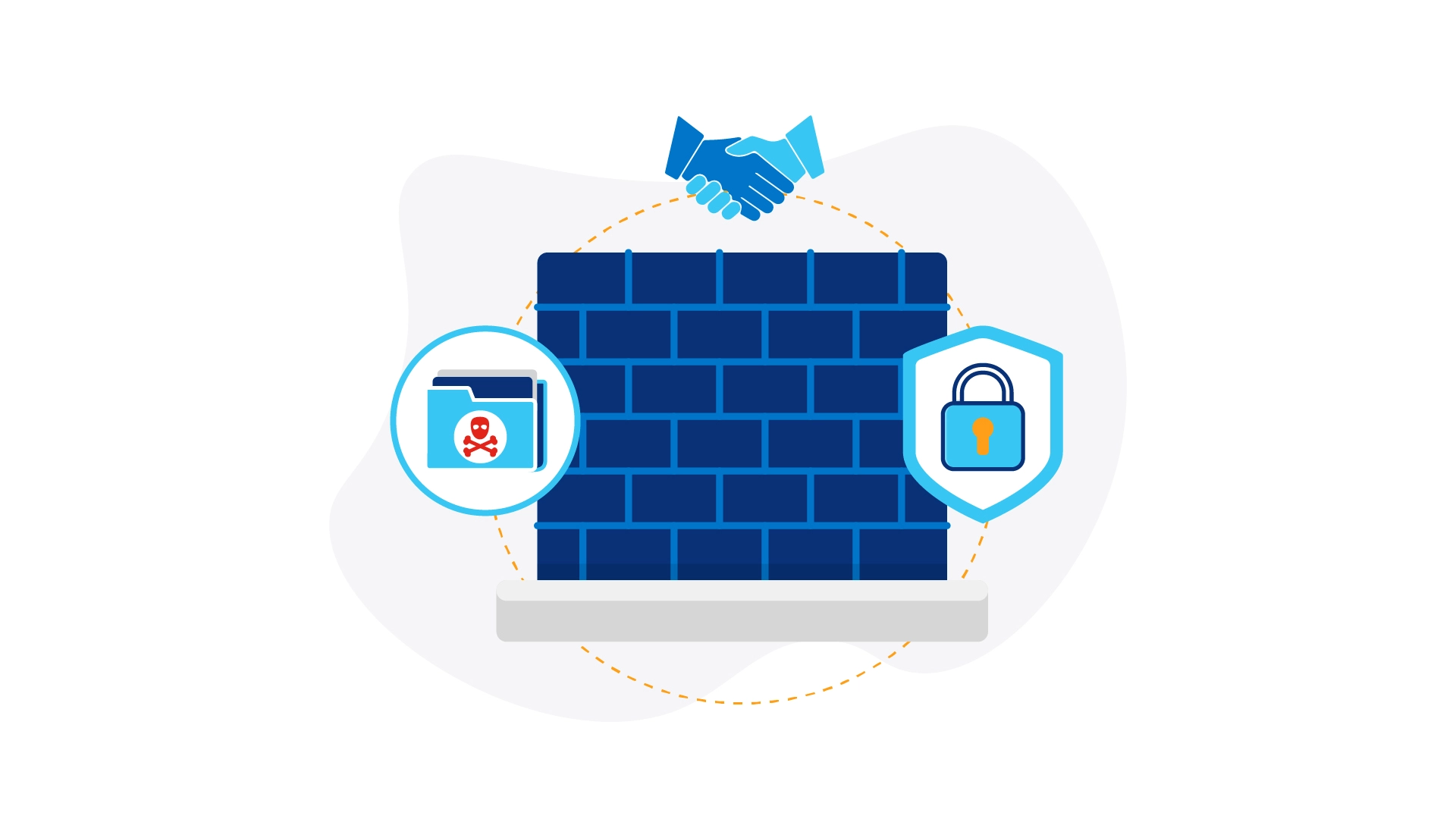Secure your brand reputation with Managed Digital Risk Protection
Turnkey data backup, recovery, scanning and monitoring solutions to avert high-profile disasters that cost you time, money and reputation.
Why does your business need digital risk protection?
Threats of data corruption and ransomware are constant in today’s digital landscape. Fortify your assets and identify and eliminate deadly threats before they impact your customers, bottom line or brand reputation.

Brand threat monitoring
Monitor for threats that target your social media, executives, employees and customers. Our team of specialists create rapid, accurate, actionable threat intelligence for complete risk protection.

Supply chain risk management
Manage the risk from third and fourth-party suppliers processing and storing your organisation’s data. Collect and generate intelligence and proactively monitor suppliers to gain oversight of supplier risks.

Comprehensive ransomware assessment
Get strategies for minimising ransomware exposure, the likelihood of infections and the impact of ransomware attacks. Strengthen your security posture and protect your intellectual property with Lumen® Ransomware Assessment.

Holistic approach
to risk management
Work collaboratively with a team of established cybersecurity specialists to improve your organisation’s risk management. Implement security technologies and frameworks and transform governance processes to minimise all types of digital risks.
End-to-end Digital Risk Protection for all your data and assets
Digital transformation expands an organisation’s attack surface and creates many entry points for attackers to exploit. Monitor your entire digital footprint, prevent and block threats before they occur, and plan ahead so you are not caught off-guard.
Learn more about Lumen Digital Risk Protection
What is Lumen Managed Digital Risk Protection?
Lumen Digital Risk Protection provides vulnerability scanning, threat detection and data protection across all your digital assets. We provide end-to-end protection so you can reduce exposure and still be prepared for any eventuality.
Lumen Managed Digital Risk Protection services include:
- Three-part vulnerability scanning that includes dark web scan for exposed credentials, technical network scan and application scanning.
- Black, white or gray box scanning and periodic rescanning of external and internal IPs
- Advisory services that analyse existing security gaps and provide technical measures to refine your existing risk management program.
- Threat intelligence from one of the world’s largest internet infrastructures, giving you a massive field of view regarding evolving and emerging cyber threats.
- Cost-effective security training to reduce human error data breaches.
How does Lumen Managed Digital Risk Protection work?
Lumen Managed Digital Risk Protection begins with a kick-off call to understand your business, requirements, risks and concerns. We then dive deep into technical details by performing a full system scan of your network, applications and data. We also evaluate your current malware protection, business continuity programs, backup strategies and procedures, data policies and incident response plans.
Lumen security analysts deliver a report summarising findings, methodology and recommendations within one month of the kickoff call. Once we’d identified your vulnerabilities, it’s time to act to protect your business and customers. We work with you to prioritise and provide the security systems you require, from data backup to managed security services, cybersecurity training and more.
Digital Risk Protection FAQs
What is digital risk?
Digital risk is the potential negative impact of bad actors exploiting your digital technologies and assets. Digital transformation is essential to remain competitive as it brings agility and connectivity, improves customer experiences and lowers costs. Unfortunately, ‘speed to market’ digital transformation also results in:
- Growing complexity of the digital tech stack.
- Increased reliance on third-party vendors and services.
- Ever-expanding digital supply chains.
- Misalignment between different digital technologies.
- Existing vulnerabilities in your applications and third-party infrastructure.
The increased complexity of IT infrastructure creates infinite opportunities for cybercriminals to target and access an organisation’s confidential data.
What is digital risk protection?
Digital risk protection is the technologies, processes and policies an organisation implements to minimise or eliminate digital risk impact. The focus is on ensuring sustainable digital transformation and cloud adoption so that you can experience the benefits without causing business disruption or loss in customer data, trust and brand reputation. Proactive digital risk protection does not inhibit performance; it capitalises on facing digital risks head-on to build stronger resilience.
Managed digital risk protection involves outsourcing risk functions to a third-party provider with the capabilities, technology and expertise to support your risk management efforts. Managed risk protection reduces the burden of your internal IT team, allowing them to focus on critical business functions instead of risk mitigation.
Why is digital risk protection important?
For many businesses, the information security landscape has changed significantly in the last few years. SaaS resources, cloud technologies, machine learning (ML) and artificial intelligence (AI) have increased the complexity of IT environment. At the same time, both the breadth and depth of the threat landscape have increased. Cybercriminals use sophisticated technologies to plan more types of attacks with greater frequency and accuracy. It is now more challenging than ever to protect digital assets against advanced threats of malware, ransomware and other complex attacks.
Unfortunately, the impact of an attack has also increased exponentially. Customers are hyperaware of the risk and impact of data breaches and hold organisations to greater scrutiny and accountability. Laws and regulations across industries favour the customer’s need for privacy. They also place stringent compliance and audit requirements on businesses of all sizes. There is increasing pressure on organisations from all sides to take steps to mitigate and minimise digital risk impact.
What is the approach to digital risk protection?
Digital risk protection takes a four-step approach to systematic risk mitigation.
Step 1 — Map
The first step is understanding your digital attack surface and determining where and how threat actors might strike. Assessment of all your digital assets like code bases, data stores, application environments and internal systems is just one aspect of the mapping process. It extends to things like web activity, social media presence and dark web exposure to look for attack opportunities beyond the obvious.
Step 2 — Monitor
Monitoring is the process of translating millions of data points into actionable threat intelligence. It is done with digital footprint contextualisation, multidimensional threat analysis and threat evolution tracking. You require the right combination of technologies and experts to identify suspicious behaviour and raise alerts before they impact business activity.
Step 3 — Prevent
Risk prevention steps are taken before any incidents occur. It involves changes in governance policies and procedures, adopting technologies like firewalls and implementing access controls and rules that automate threat blocking. It is comparable to establishing a home security system and installing the best locks to mitigate the risk of robbery.
Step 4 — Manage
Management is risk mitigation after an incident occurs. It involves steps like isolating impacted areas, shutting down processes or initiating data recovery within minutes of an attack. Management requires planning so everyone knows how to respond to incidents. Automation and monitoring technology play a big role in ensuring correct incident management.
What are the challenges in digital risk protection?
Lack of knowledge and skills, ever-evolving threats and changing global conditions are some challenges organisations experience in their digital risk management efforts. We outline some of them below.
New and emerging risks
The digital era brings new risks that traditional risk frameworks and management methods may not anticipate. Identifying and assessing new risk sources such as social unrest, pandemics, technological disruption, geopolitical instability, and environmental degradation is essential.
Lack of expertise
A mix of technical, business and digital skills is essential for digital risk management. You must invest in ongoing training and support to ensure your team remains updated with the latest challenges. Organisations find it difficult to source and retain a diverse, inclusive team that brings different experiences and perspectives to risk issues.
Absence of risk leadership
Effective digital risk protection requires aligning risk functions with business objectives and goals. You must also implement a flexible and robust risk governance structure with clear roles, responsibilities and accountabilities. Organisations struggle to establish strong risk leadership with the vision, mission and strategy to influence stakeholders, foster a risk prevention culture and drive the risk agenda forward.
What are the opportunities in digital risk protection?
While the digital era poses many risk management challenges, it also offers opportunities to enhance performance and create value. It is possible to identify and take advantage of the opportunities that arise from change and uncertainty by embracing risk as a strategic asset. For example, you can use insights from risk data to inform your innovation, decision-making and optimisation. With the right technologies, support and expertise, risk management becomes a source of competitive advantage and a catalyst for improvement, learning and transformation.
Lumen Library
Insights and Resources
Questions? Let’s talk.
Contact our team and get answers you’re looking for.





